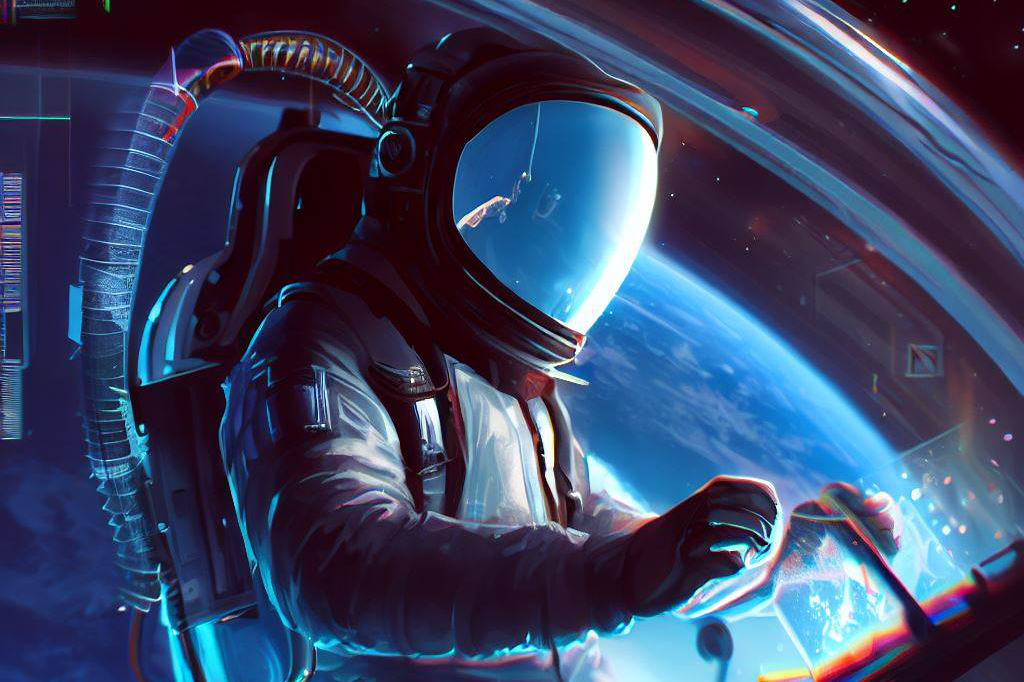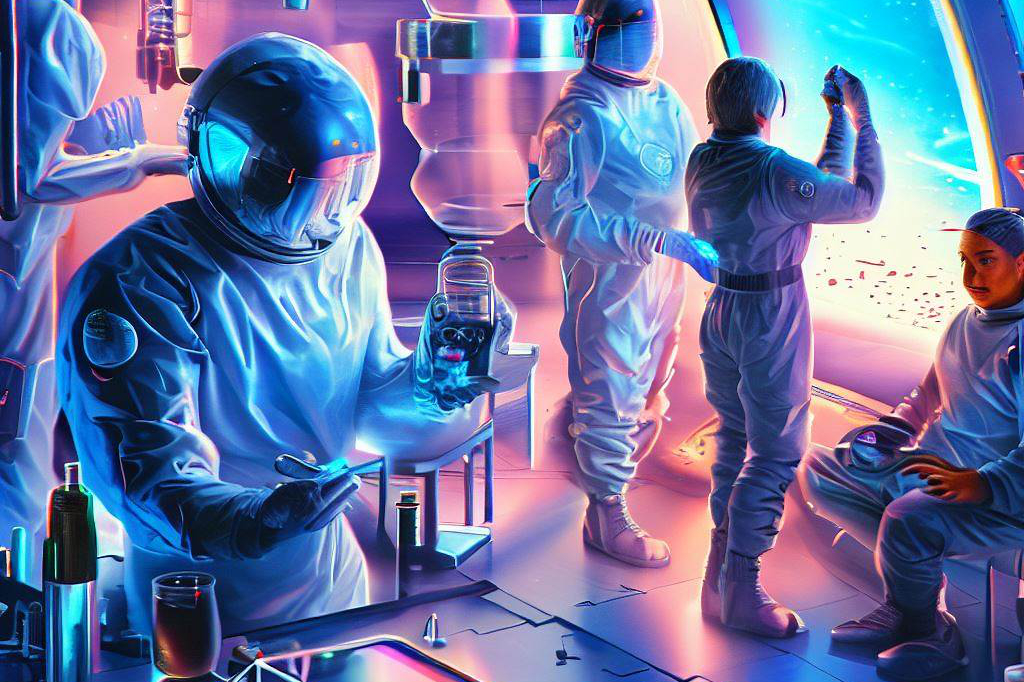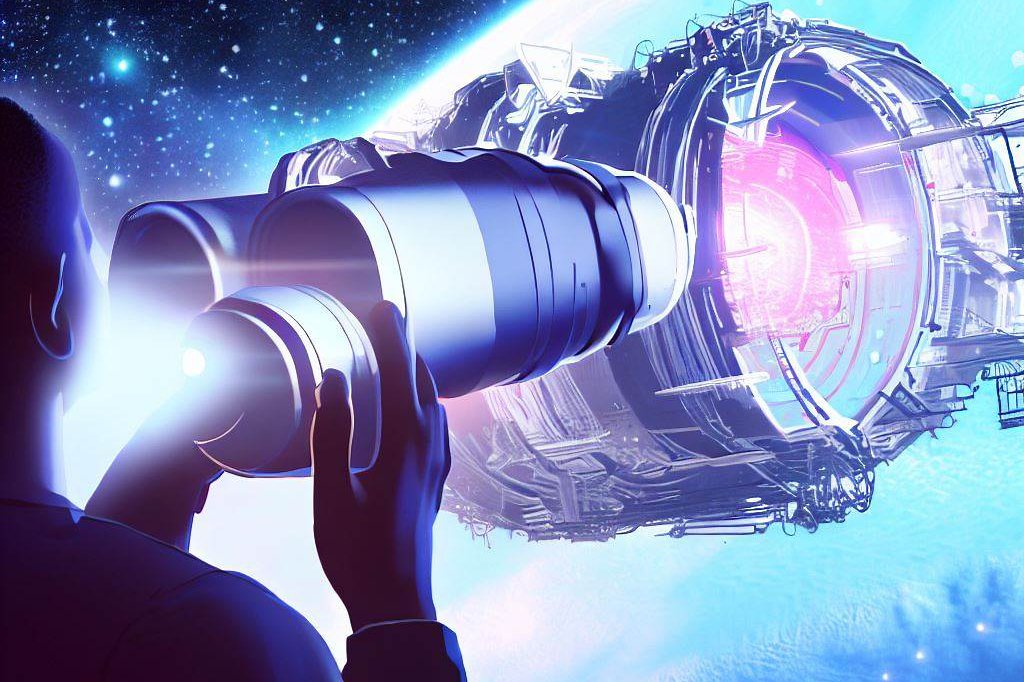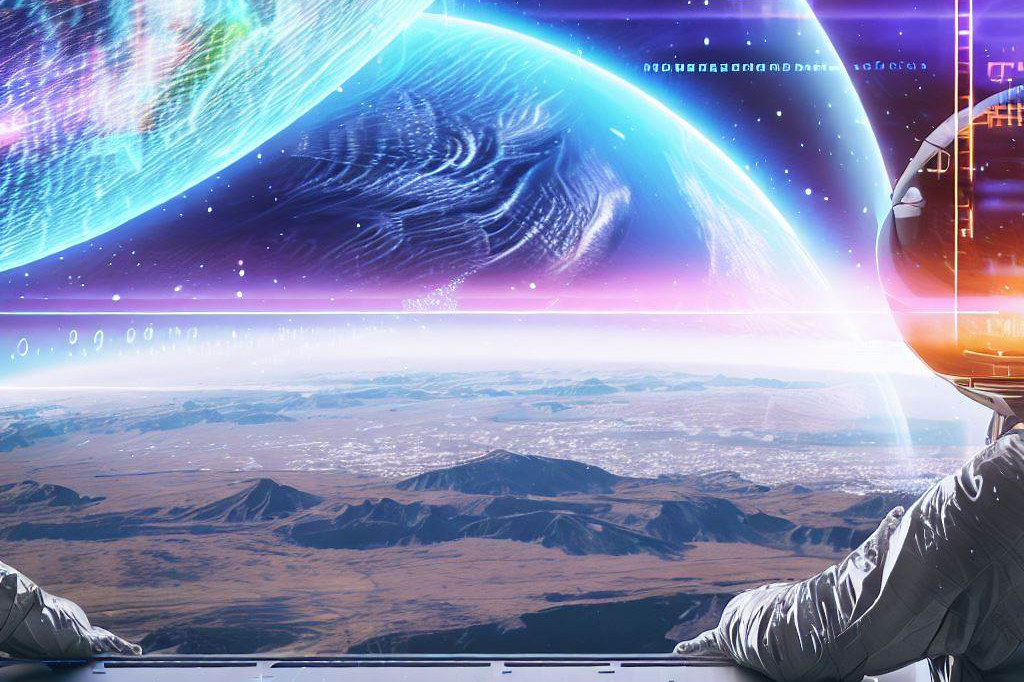The Potential of Space Tourism for Scientific Research
Space exploration has always been a fascinating subject, and the possibility of space tourism has only increased our desire to experience the final frontier. However, space tourism is not just about fulfilling our wanderlust or setting new records; but can also have significant implications for scientific research.
With private companies like Virgin Galactic, SpaceX, and Blue Origin offering space travel experiences, there are now opportunities to conduct research in microgravity environments that were previously only accessible to government agencies.
Brief Overview of Space Tourism
Space tourism refers to traveling into space for leisure or recreational purposes. It is no longer a distant reality since several companies are working on making it accessible to the public.
Many people dream of flying beyond Earth’s atmosphere and orbiting around our planet while experiencing weightlessness or watching celestial objects up close.
The first-ever space tourist was Dennis Tito in 2001 who traveled to the International Space Station (ISS) onboard a Russian Soyuz spacecraft.
Since then, seven other people have paid millions of dollars for this once-in-a-lifetime experience. With private companies such as SpaceX and Blue Origin working hard to make suborbital flights available at a lower cost than previous options, it seems possible that more people will be able to experience life beyond our planet in the future.
Importance of Scientific Research in Space Exploration
Scientific research has always been an essential part of any human exploration mission into unknown territories. Through experimentation and observation, we can learn more about the universe and discover new technologies that we might not otherwise have had access to.
Similarly, with increasing interest in space tourism, there is immense potential for conducting scientific experiments in microgravity environments. Microgravity offers researchers an opportunity to study how biological systems function differently and how physics operates under such conditions compared with what we observe on Earth.
From developing new materials and technologies to investigating human physiology in space, there are plenty of research avenues that can be exploited through space tourism. Moreover, scientific research in space tourism can also provide insights into the viability of long-duration space travel and colonization beyond our planet.
The Benefits of Space Tourism for Scientific Research

Access to Microgravity Environment for Experiments
One of the most significant benefits of space tourism for scientific research is access to a microgravity environment. The Earth’s gravity significantly affects how objects behave and interact with each other.
In space, however, there is no gravity or weightlessness, known as microgravity, allowing researchers to conduct experiments that cannot be done on Earth. Microgravity has a considerable impact on physical phenomena such as fluid dynamics, combustion processes, and crystal growth.
It also alters biological processes such as cell growth and gene expression. Therefore, studying these physical and biological phenomena in a microgravity environment can lead to new discoveries that can have practical applications in various fields like medicine, energy production, and materials science.
Study of Human Physiology in Space
Another significant benefit of space tourism for scientific research is the study of human physiology in space. Human beings are not built to live in space; they are affected by various physiological changes such as
- muscle atrophy,
- bone density loss,
- cardiovascular changes,
- and immune system suppression.
Studying human physiology in a microgravity environment can lead to new insights into how our bodies adapt or fail to adapt to an environment like space. Such knowledge can help scientists develop new medical treatments for conditions like osteoporosis or heart disease that affect people on Earth.
Exploration of New Materials and Technologies in Zero-Gravity Environment
The third significant benefit of space tourism for scientific research is the exploration of new materials and technologies in a zero-gravity environment. In microgravity environments like space stations or suborbital flights offered by private companies like Virgin Galactic or Blue Origin, researchers can develop new materials that have unique properties that cannot be achieved on earth due to gravity.
For example, NASA has been researching carbon nanotubes – cylindrical molecules made of carbon atoms – to develop lightweight, high-strength materials for spacecraft construction. Without the constraints of gravity, these tubes can be grown much longer than their Earth counterparts, making them stronger and more resilient.
Examples of Space Tourism for Scientific Research

Virgin Galactic’s Collaboration with NASA
One of the most promising examples of space tourism for scientific research is the collaboration between Virgin Galactic and NASA to conduct suborbital research flights. The partnership has been ongoing since 2011 and aims to provide researchers with access to a cost-effective platform where they can conduct experiments in a microgravity environment.
Virgin Galactic’s SpaceShipTwo is designed to reach suborbital altitudes, which enables researchers to experience weightlessness for several minutes at a time. During these flights, scientists can test and develop new technologies that can be used in space exploration while also studying the effects of microgravity on human physiology.
In addition to working with NASA, Virgin Galactic has also partnered with several universities and research institutions, including the Southwest Research Institute and the International Institute for Astronautical Sciences. These collaborations are expected to yield important insights into various areas of science that could help shape future space exploration missions.
Blue Origin’s Partnership with German Aerospace Center
Another notable example of space tourism for scientific research is Blue Origin’s partnership with the German Aerospace Center (DLR) to study the effects of microgravity on combustion processes. The two organizations have been working together since 2018 when Blue Origin launched its New Shepard rocket carrying DLR’s experimental payloads.
The research conducted during these flights has focused on understanding how fire behaves in microgravity environments, which could have implications for future spacecraft design and safety protocols. The data collected from these experiments will help scientists develop better models that can predict how fires will behave in space.
Blue Origin and DLR plan to continue their collaboration, with future missions aimed at studying other aspects of combustion science in microgravity environments. These efforts could lead to significant advancements in propulsion technology as well as improved fire safety measures for astronauts working in space.
SpaceX’s Plans for Lunar Tourism and Scientific Research
SpaceX, led by billionaire entrepreneur Elon Musk, has plans to send private citizens around the moon for scientific research purposes. The company announced its intention to launch a lunar tourism mission in 2018, with a planned launch date of 2023.
The mission, which will be conducted using SpaceX’s Starship spacecraft, is expected to last approximately six days and will take passengers on a loop around the moon before returning to Earth. While the primary goal of the mission is tourism, SpaceX has also indicated that it intends to conduct some scientific experiments during the flight.
The details of these experiments have not yet been released, but they could include studying the effects of radiation on human physiology and testing new technologies in space. The mission is part of SpaceX’s larger goal of developing affordable commercial space travel that can support scientific research and exploration efforts.
Challenges and Limitations

High cost associated with space tourism
One of the biggest challenges associated with using space tourism for scientific research is the high cost involved. Currently, the price tag for a single seat on a suborbital flight can range anywhere from $200,000 to $500,000.
This is prohibitively expensive for many researchers and institutions that may not have the necessary funding to support such endeavors. Furthermore, it limits the number of individuals who are able to participate in such flights and thus limits the potential scope of research.
Limited availability and accessibility of space tourism opportunities
Another challenge associated with using space tourism for scientific research is the limited availability and accessibility of such opportunities. Currently, there are only a few companies offering suborbital flights and even fewer offering orbital flights. This limits both the number of researchers who can participate in such flights as well as the amount of time that can be spent conducting research in space.
Safety concerns
Safety concerns pose another challenge when it comes to using space tourism for scientific research. Spaceflight is inherently dangerous and carries with it significant risks for both passengers and crew members alike.
While commercial spaceflight companies have made significant strides in improving safety measures over recent years, accidents can still happen, as evidenced by recent tragedies like Virgin Galactic’s SpaceShipTwo crash in 2014. As more individuals begin to participate in commercial spaceflights, ensuring their safety will become an increasingly important concern for both operators and researchers alike.
Overall, while using space tourism for scientific research offers many potential benefits, there are also significant challenges that must be overcome before this idea can become a reality on a larger scale. However, with continued investment and advancements in technology, these challenges may one day be surmounted – opening up exciting new possibilities for exploration and discovery beyond our planet.
Future Implications and Potential Developments

Possibility of increased collaboration between private companies and government agencies for scientific research in space tourism
While space tourism is currently dominated by private companies such as Virgin Galactic, Blue Origin, and SpaceX, there is potential for increased collaboration between these companies and government agencies like NASA. This could lead to more opportunities for scientific research in space tourism.
Private companies could benefit from the funding and resources provided by government agencies, while government agencies could benefit from the expertise and innovation of private companies. For example, a partnership between SpaceX and NASA to send private citizens around the moon for scientific research purposes could lead to groundbreaking discoveries in areas such as astrobiology, geology, or even human survival in deep space environments.
Advancements in technology that could make space tourism more affordable and accessible
One major limitation of space tourism currently is its high cost. However, advancements in technology such as reusable rockets or 3D printing of spacecraft components could potentially make it more affordable. Reusability reduces the cost of each mission since spacecraft can be used multiple times instead of being disposed of after each launch.
Additionally, advancements in 3D printing technology would allow for spacecraft components to be manufactured on-site which would reduce the overall cost of transportation. With more affordable options available, there will be an increase in accessibility, which will lead to greater participation by researchers from a variety of fields.
Final Thoughts

Exploring the final frontier together
Space tourism has the potential to revolutionize scientific research and experimentation. With increasing collaboration between private companies and government agencies, we may see more research opportunities in microgravity environments that were once impossible or prohibitively expensive. Additionally, advancements in technology could make space tourism more affordable and accessible, allowing for more people to experience the wonders of space.
Challenges and Limitations
However, there are still challenges to overcome. The high cost associated with space tourism means that only a select few will have access to these experiences.
Furthermore, safety concerns must be addressed before these trips can become a reality for the general public. Additionally, while space tourism provides unique opportunities for scientific research and experimentation, it is important to ensure that it does not come at the expense of other important areas of research.
A bright future ahead
Despite these challenges, we can look forward to a bright future where space tourism opens up new possibilities for scientific discovery and exploration. With continued collaboration between private companies and government agencies, we may see exciting developments in fields such as materials science, human physiology, and combustion processes.
And who knows? Perhaps one day soon we will all have the opportunity to leave Earth’s atmosphere and explore this final frontier together (if that’s your bag – I’ll wave from down ‘ere, thanks!)

C M, a seasoned editor, journalist, and consultant, is deeply fascinated by the convergence of technology, space, and the future of humanity.
With a particular interest in transhumanity, futurology, and the philosophical and ethical dimensions of these domains, C M serves as the lead contributor to SpaceSpotlight and TranscendSphere.
When not penning insightful articles on these rapidly evolving fields, C M indulges in their love for podcasts and books, proudly embracing their status as a ‘Happy Nerd Extraordinaire!’



